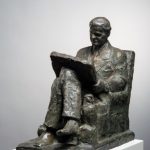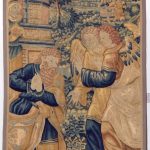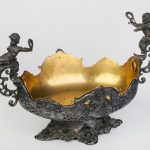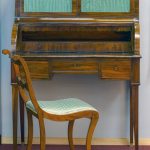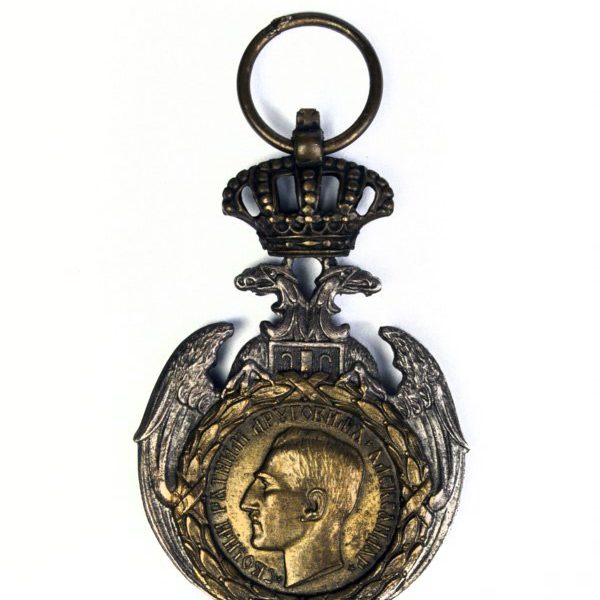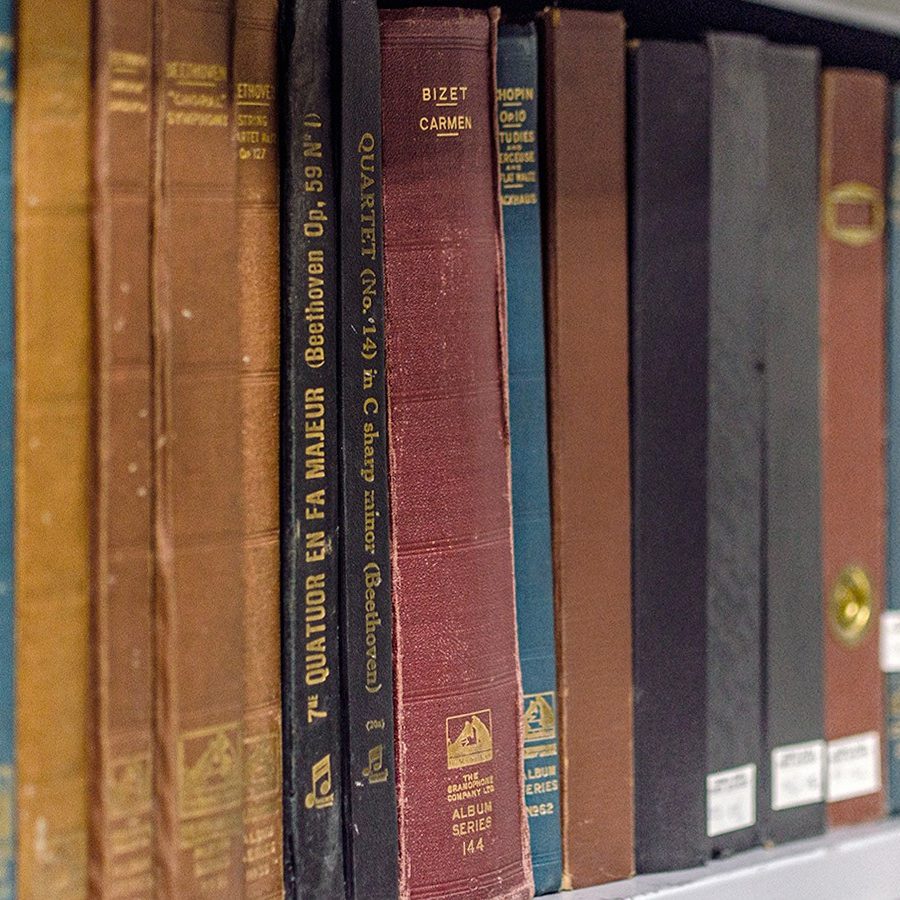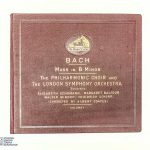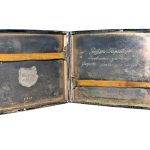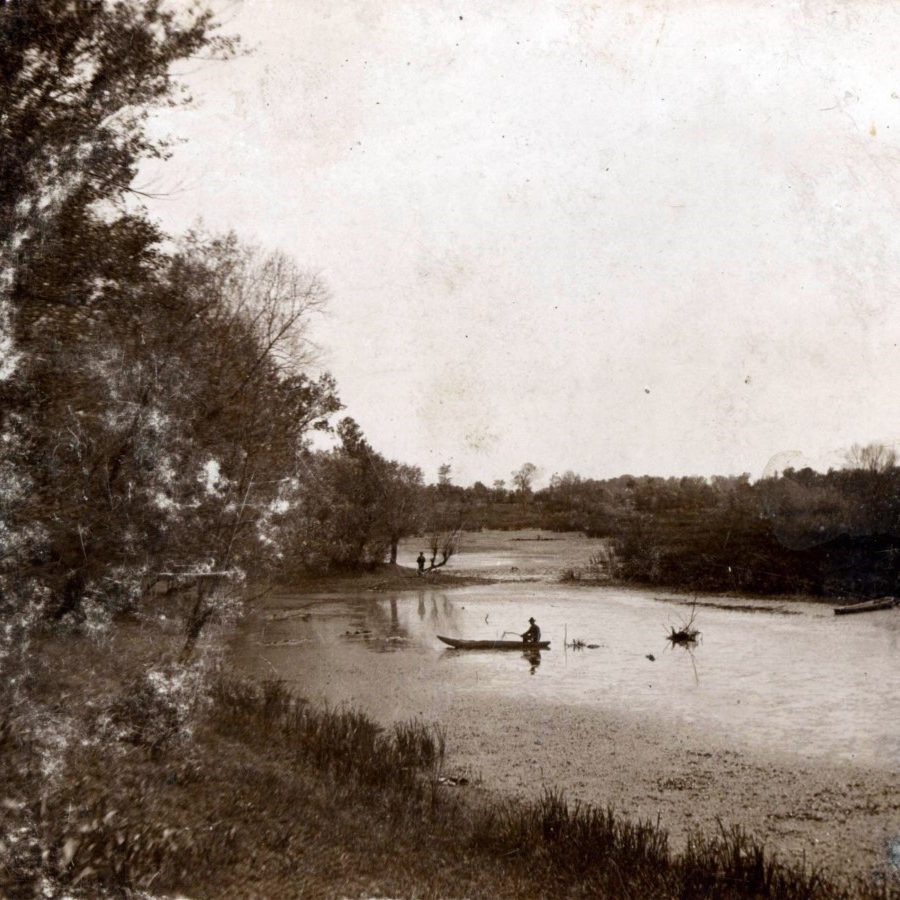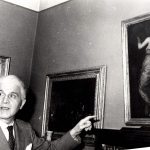All the items of The Pavle Beljanski Memorial Collection are preserved and processed within the Collection of Fine Arts, the Collection of Applied Art and the Archives Collection. All three collections evolved from the former Elementary and Documentary Funds. Unlike the Elementary Fund (the legacy of Pavle Beljanski consisting of 185 artworks, which, according to the Gift Agreement, cannot be altered), the Documentary Fund is more flexible and its content represents an important addition to understanding the collector, artists from the collection and the museum history. Established on the initiative of Pavle Beljanski to donate the family archive to The Memorial Collection, as well as the letters he exchanged with friends and artists, documents and sketches by artists from the collection, the Documentary Fund was constituted in 1962.
COLLECTION OF FINE ARTS
The Collection of Fine Arts is divided into two segments: Elementary Fund (Pavle Beljanski’s collection) and the Fine Arts Collection of the Documentary Fund. Unlike the Elementary Fund, which was concluded with the death of the donor in 1965, the Art Collection of the Documentary Fund is constantly being updated and today includes 790 works in various art techniques (oils on canvas, drawings, watercolours, tempera, pastels, combined techniques, prints, sculptures, reliefs, etc.), procured through gifts and purchases. It features more than 120 artists, including Nadežda Petrović, Kosta Miličević, Beta Vukanović, Miloš Golubović, Uroš Predić, Stojan Aralica, Marino Tartaglia, Sava Šumanović, Risto Stijović, Pjer Križanić, Leposava St. Pavlović, Nebojša Mitrić, Mira Sandić, Zuko Džumhur, Petar Omčikus and others. Established and assembled with the aim of exploring the artists’ lives, tendencies in art and artworks in the collection of Pavle Beljanski, it represents a valuable source for the research of 20th century national and Yugoslav art. It also contains works of art donated during the Pavle Beljanski Memorial foundation and covers a much wider period of time: from classical period, through Renaissance, Baroque and Classicism, all the way to Modernism and the early 21st century contemporary art.
The following catalogues contain more information on the works from this collection and on their creators: Drawings and Prints in The Pavle Beljanski Memorial Collection (2004), Collection of Fine Arts: Everything from Badge to Monumental Canvas (2007), The Pavle Beljanski Memorial (2013) and Fine Arts in The Pavle Beljanski Memorial Collection (2013).
COLLECTION OF APPLIED ARTS
The Collection of Applied Arts was established owing to Pavle Beljanski’s family members. Honouring the collector’s wish, in 1966 they donated furniture, artworks, a library, a collection of gramophone records, a uniform, decorations and his personal items to support the creation of The Pavle Beljanski Memorial. Conceptualized on these works of applied arts, the collection today contains 55 items from the period between the 15th and 21st century, such as: tapestries of Flemish masters, salon furniture purchased between the two world wars in Berlin, Vienna, Paris and Rome, liturgical and decorative objects (decorative vessels, medals and badges with portraits of artists, stamps with copies of artworks). Besides its stylistical and temporal diversity, the collection provides numerous opportunities to learn about the preferences, personal spaces, travels, mundane and artistic environment of Pavle Beljanski, as well as the epochs in which his collection was formed and still lasts.
ARCHIVES COLLECTION
Its volume and diversity have initiated the division into individual collections. Today, there are a total of six collections which preserve documents, decorations, books, realia, gramophone records, photographs. Currently, the Archives Collection contains a total of 3,423 items. The diversity of objects from this collection represents a valuable testimony and source for new researches into the collector and collections, but also into complex relationships between art and socio-political developments in the national, regional and European context.
Collection of Decorations
The Collection of Decorations mostly consists of Pavle Beljanski’s decorations received for the promotion of the diplomatic service. In his almost four-decade-long career, he received more than twenty decorations, of which seventeen have been preserved. Together with two more items belonging to his younger brother, Nikola Beljanski, and the painter, Jefto Perić, today they form the Collection of Decorations. According to their cultural-historical, typological and aesthetic features, the decorations of The Memorial Collection can be divided into two basic categories. The first group includes national decorations from the periods of the Kingdom of Serbia (1882–1918), the Kingdom of Serbs, Croats and Slovenes (1918–1929) and the Kingdom of Yugoslavia (1929–1945). The second group is larger and consists of high-rank decorations of foreign countries, most often deserved by mediation in establishing diplomatic relations with the Federal People’s Republic of Yugoslavia. In addition to decorations, the collection also includes rare copies of official decrees, diplomas and charters of Spain, Italy, Poland, Belgium, Egypt and Greece. When Pavle Beljanski’s family donated his personal objects intended for The Pavle Beljanski Memorial in 1966, twenty valuable decorations were among these valuable items.
The publication From Stockholm to Belgrade through the Collection of Decorations (2014) provides a complete insight into the origin of the collection in the context of social and cultural relations of the time in which Pavle Beljanski lived.
Collection of Gramophone Records
The collection includes 87 of Pavle Beljanski’s shellac records donated to The Memorial Collection in 1966 by his heirs.
As a passionate collector, Beljanski carefully selected special editions of Columbia Records, His Master’s Voice and other publishers. He bought classical works by Bach, Beethoven, Haydn, Grieg, Wagner, Mozart, Mendelssohn, performed by symphony orchestras such as the Royal Albert Hall, the Royal Philharmonic of London, the Vienna Philharmonic, the Berlin Opera and others. The collection contains concert recordings by popular contemporary pianists such as Sergei Rachmaninoff and William Bacchus, then violinist Jacques Thibault and his trio with Alfred Corto and Pablo Casales.
Nedeljko Gvozdenović’s memories of afternoon parties in Beljanski’s apartment also testify to Beljanski’s dedication to music: “There we were, enjoying lunch with the whole gallery surrounding us while we talk about painting. And then – the music. Old winding gramophone. Beljanski was extremely meticulous. He carefully wiped the records and cherished them like the apple of his eye, as they say. This lasted until four or five o’clock in the afternoon, and then he left for a game of bridge with his friends.”
Collection of Realia
The Collection of Realia preserves the personal items of the donor Pavle Beljanski, of his family members and artists from the collection (painting kits and objects from their studios). The most valuable items in the Collection are personal items of Pavle Beljanski and a ceremonial diplomatic suit, donated to the museum after his death in 1965. This copy belongs to the 2nd Class suits designed according to the Regulations on Tailoring and Wearing Diplomatic-Consular Uniforms from 1937, intended for secretaries and consuls general assigned in foreign countries at the Ministry of Foreign Affairs of the Kingdom of Yugoslavia. The protocol uniform from The Memorial Collection was made in the Italian workshop of Enrico Cucci in Rome, the famous supplier of His Royal Highness the Prince of Piedmont – Crown Prince of Umberto, as written on the lining of the bicorne.
Collection of Books
Pavle Beljanski’s vast library of books testifies to his range of interests and the knowledge of several foreign languages. He donated a part of it to the Department of Art History at the Faculty of Philosophy in Belgrade in 1964 while books about other topics were donated to The Memorial Collection by the collector’s heirs in 1966. The library contains 402 titles from philosophy, history, literature (novels, short stories, travelogues …), history of law and diplomacy in Latin, German, French, Italian, English and Serbian, covering the period from the mid-18th to the mid-20th century. After each purchase, Beljanski would bind the books with the leather, or so-called French bookbinding, which gives the library a uniform and luxurious look.
Collection of Documents
The collection contains valuable documents related to the origin, life and diplomatic career of Pavle Beljanski and the artists represented in the collection, as well as to the establishment and important events related to the museum itself. The collection depository includes documents from the late 19th century. It is still being updated and today it contains 2,329 items. The first documents were donated by the collector in 1961. Diverse in its content, the collection vividly depicts Pavle Beljanski’s family, his friendships with artists, diplomatic transfers, revealing from a new angle the biographies of many important personalities from the world of art and culture of that time – Milan Kašanin, Isidora Sekulić, Jovan Dučić, Veljko Petrović, Ljubo Babić and others.
Collection of Photographs
The collection contains more than a hundred photographs that have been donated to the museum by Pavle Beljanski, members of his family, artists and their heirs, as well as the museum’s friends. The most numerous are photographs from the collector’s personal and family legacy and represent valuable testimonies about the environment and the people that had an impact on the life of Pavle Beljanski. The collection also contains photographs Pavle Beljanski captured while staying in European cities, socializing with friends from the period after the Second World War, as well as photographs from his official assignments as the head of the Protocol of the Ministry of Foreign Affairs of the Federal People’s Republic of Yugoslavia. Also, along with their letters addressed to Beljanski, artists would sometimes attach photographs of their artworks. Eventually, they or their heirs would even donate personal photographs to the museum.
Photographs from this collection, organized individually or grouped in albums, represent an authentic visual testimony both in the broader context of European and Yugoslav culture and the narrow context of most intimate family and personal Beljanski’s relationships.




